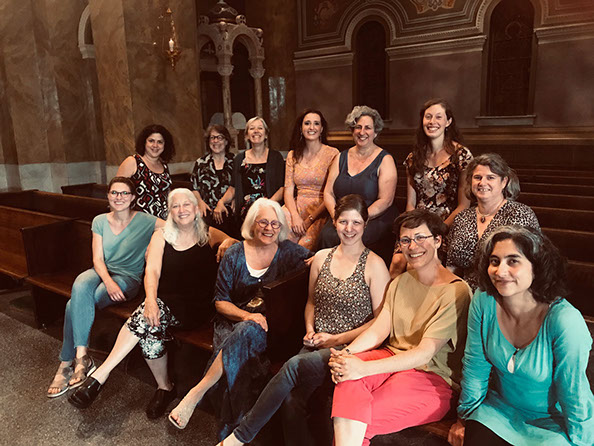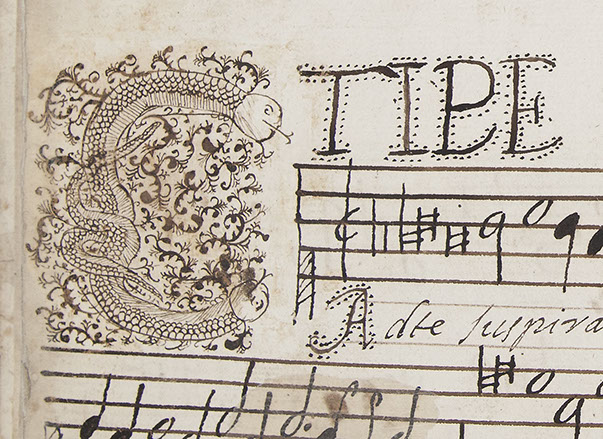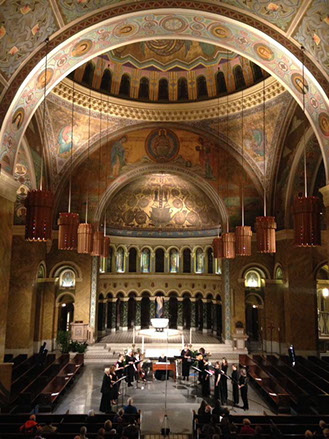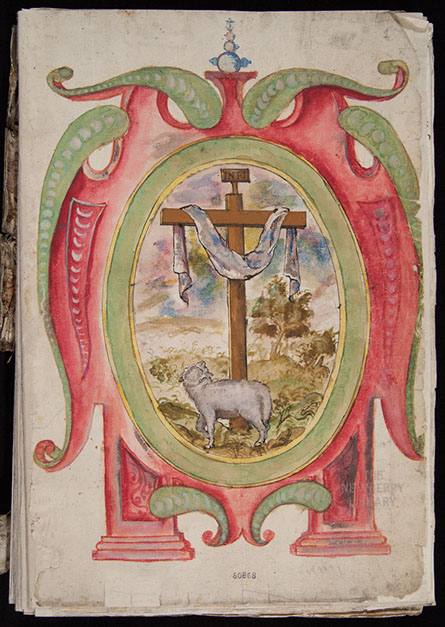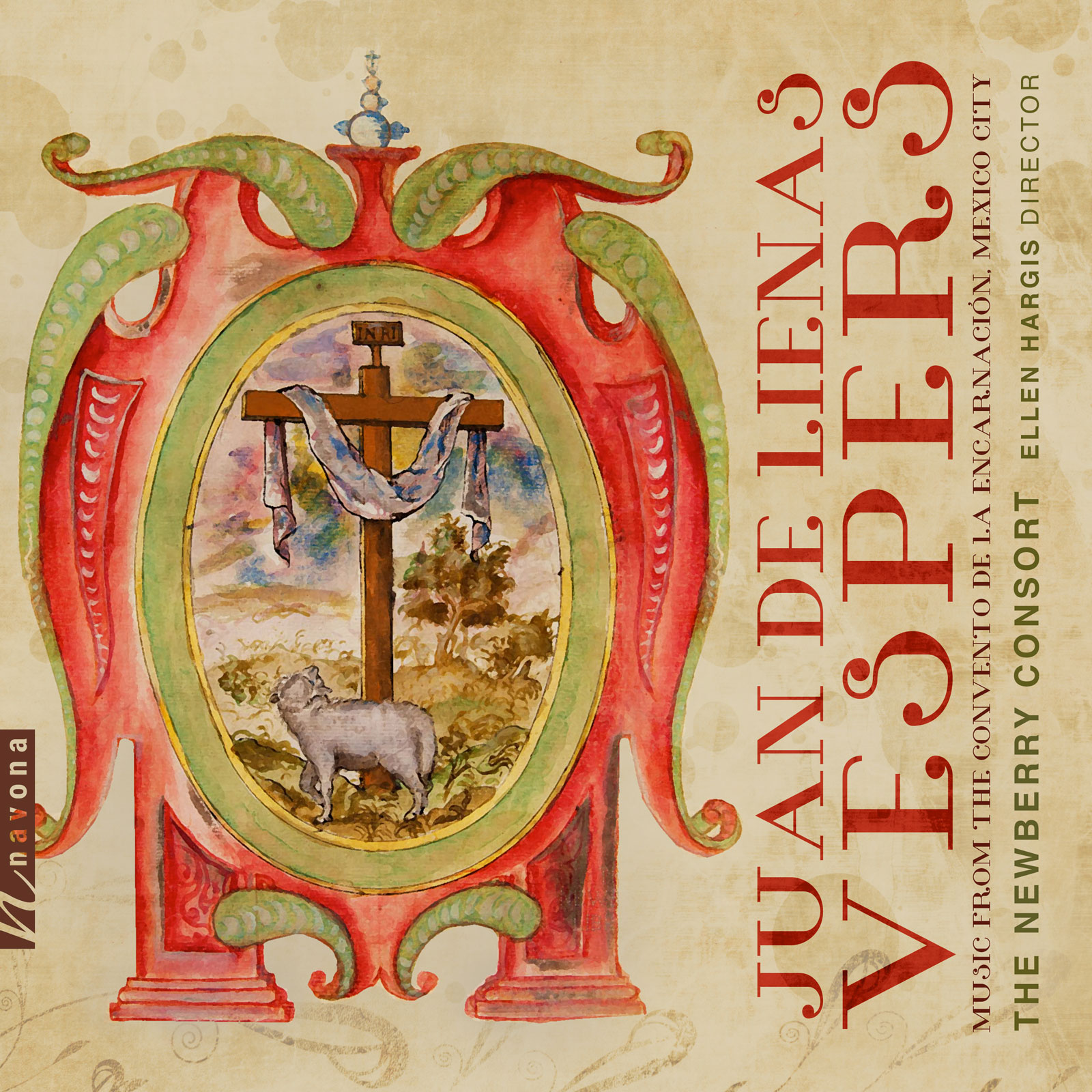
Share Album:
Vespers
Juan de Lienas composer
The Newberry Consort | Ellen Hargis director
Chicago's best-known early music ensemble The Newberry Consort exhilarates with VESPERS, a collection of dazzlingly original music for women’s voices. The composer? A mysterious early-17th-century Mexican named Juan de Lienas, whose style energetically oscillates between Renaissance and Baroque elements.
Little is known about de Lienas beyond the manuscripts, which, much to the undeserved discredit of the poor composer, occasionally include unflattering personal remarks scrawled in the margins. Perhaps that these insults on his appearance and personality stemmed from mere envy, for the music captured by his hand presents such skill, wit and zest that it can still be enjoyed a full four centuries after its inception.
Not an easy feat by any means, and certainly facilitated by a spectacular performance of The Newberry Consort under the direction of director and soprano Ellen Hargis. Since the music on VESPERS was originally composed for use in women's convents, the bass voice is either sung up the octave, or replaced by bassoon or viola da gamba. The result is graceful, airy, ethereal, otherworldly. Easy on the ears not only for lovers of early music, and for these: a veritable treat.
Listen
Stream/Buy
Choose your platform
"A spellbinding collection"
Track Listing & Credits
| # | Title | Composer | Performer | |
|---|---|---|---|---|
| 01 | Deus, in adiutorium meum intende | attr. Juan De Lienas (fl. 17th c.) | The Newberry Consort | 1:29 |
| 02 | Martyr Dei | Liber Usualis | The Newberry Consort | 2:20 |
| 03 | Dixit Dominus á 8 | Juan De Lienas | The Newberry Consort | 5:41 |
| 04 | Beatus vir á 11 | Fray Jasinto (fl. 17th c.) | The Newberry Consort | 6:32 |
| 05 | Laudate pueri á 8 | Juan De Lienas | The Newberry Consort | 6:56 |
| 06 | Credidi propter á 8 | Juan De Lienas | The Newberry Consort | 7:03 |
| 07 | Laudate Dominum omnes gentes á 8 | Anonymous | The Newberry Consort | 3:52 |
| 08 | Quinto tiento de medio registro de tiple de séptimo tono, FO 29 | Francisco Correa De Arauxp (c. 1576-1654) | The Newberry Consort | 4:46 |
| 09 | Ave maris stella | Liber Usualis | The Newberry Consort | 3:50 |
| 10 | Magnificat á 10 | Juan De Lienas, Reconstructed by E. Hargis And F. Fitch versillos by Anonymous, 17th c. | The Newberry Consort | 12:03 |
| 11 | Te lucis ante terminum | Juan De Lienas | The Newberry Consort | 4:43 |
| 12 | Salve regina á 8 | Juan De Lienas, | The Newberry Consort | 8:42 |
THE NEWBERRY CONSORT
Ellen Hargis soprano, director
Margaret Carpenter Haigh soprano
Lucía Mier Y Terán Romero soprano
Salome Sandoval soprano, baroque guitar
Josefien Stoppelenburg soprano
Pamela Dellal mezzo-soprano
Ashley Mulcahy mezzo-soprano
Debra Nagy alto
Beverly Simmons alto
Candace Smith alto
Rachel Begley bajón
Frances Conover Fitch organ
Katherine Shuldiner viola da gamba
Recorded July 15-17, 2019 at St. Clement Church in Chicago IL
Recording Session Producer David Douglass
Recording Session Engineer John McCortney, Airwave Studios
Five-stop portative organ built by Taylor & Boody Organ Builders, Staunton VA
The Consort wishes to thank the following for their support of this project:
St. Clement Church
The Paul M. Angell Family Foundation
The Newberry Library
An Anonymous Family Foundation
Executive Producer Bob Lord
Executive A&R Sam Renshaw
A&R Director Brandon MacNeil
A&R Morgan Santos
VP, Audio Production Jeff LeRoy
Audio Director Lucas Paquette
VP, Design & Marketing Brett Picknell
Art Director Ryan Harrison
Design Edward A. Fleming
Publicity Patrick Niland, Sara Warner
Artist Information

The Newberry Consort
The Newberry Consort presents historically-informed programs of early music—often drawn from the collections at the Newberry Library—through an annual concert series in Chicago, national and international touring, residencies at colleges and universities, and recordings. The Newberry Consort was founded in 1986 and has offered an annual concert series continuously since 1988. The ensemble incorporated as an independent nonprofit organization in 2009.
Rachel Begley
Rachel Begley performs with ensembles across North America, and has been hailed for her virtuosic and sensitive playing on both recorders and historical bassoons. Recent performing and recording highlights include the Metropolitan Opera, Trinity Baroque Orchestra, The Newberry Consort, Yale Schola Cantorum, Boston Early Music Festival, The Play of Daniel, Early Music New York, and more.
Margaret Carpenter Haigh
Praised as “fiery, wild, and dangerous” (Classical Voice North Carolina) with “a talent for character portrayal” (Chicago Classical Review), soprano Margaret Carpenter Haigh captivates audiences with her “flawless intonation” and “perfect vocalism” (CVNC).
Pamela Dellal
Pamela Dellal, mezzo-soprano, enjoys a distinguished career performing repertoire from the 12th to the 21st centuries. Her international credits include appearances in the US, Europe, Australia and Japan.
Francis Conover Fitch
Organist, harpsichordist and clavichordist Frances Conover Fitch is thrilled to be part of this Lienas project with an amazing group of singers of all ages. Aside from teaching and running a church music program and concert series, there is nothing she likes better than collaborating as a continuo player, particularly when the repertoire is from the early Baroque era.
Lucía Mier Y Terán Romero
Born and raised in Mexico City, she is a singer, interdisciplinary artist and Spanish professor. She holds a bachelor’s degree in singing from UNAM (National Autonomous University of Mexico) an MA in Interdisciplinary Arts from Columbia College Chicago and a Masters in Spanish teaching from UNAM. She performs in numerous formats such as physical theater, music and puppetry.
Ashley Mulcahy
Mezzo-soprano Ashley has performed with numerous ensembles including Bach Collegium Japan, Theatre of Voices, New York State Baroque, Pegasus Early Music, the Boston Early Music Festival, and Music of the Baroque.
Debra Nagy
Debra Nagy has been called a “musical polymath” (San Francisco Classical Voice) for her accomplished performances as a singer and historical wind player. One of North America’s leading performers on the baroque oboe, Debra is principal oboe with Boston’s Handel & Haydn Society, Apollo’s Fire, and many other ensembles.
Salomé Sandoval
A native of Venezuela Salomé Sandoval holds a GPD in Early Music, voice and lute, from Longy School of Music; a MA from MTSU and a BM from IUDEM both in classical guitar. She has played in master classes, radio shows, theater, movie soundtracks and television.
Katherine Shuldiner
Katherine Shuldiner graduated from Oberlin Conservatory in viola da gamba performance under the tutelage of Catharina Meints. Katherine has become a fixture in the Chicago baroque music scene performing with ensembles such as BBE: Bach and Beethoven Experience, Bella Voce, and The Newberry Consort.
Beverly Simmons
Mezzo-soprano Beverly Simmons is a singer and graphic designer. With a doctorate in Early Music Performance Practices from Stanford, she has enjoyed a varied career as choral conductor, university professor, radio broadcaster, concert presenter, artist representative, and arts administrator.
Candace Smith
Candace Smith, from Los Angeles, was active in contemporary music before specializing in medieval music at the Schola Cantorum Basiliensis (Switzerland) under Andrea von Ramm. She has lived In Italy since 1978, studying and collaborating with the late singer Cathy Berberian, among others.
Josefien Stoppelenburg
Dutch soprano Josefien Stoppelenburg is best known for her dazzling vocal agility and her passionate and insightful interpretations. Her appearance on Chicago’s classical radio program, “Live from WFMT”, was selected as one of the 10 best performances in 2016.
Notes
This recording features music for Vespers and Compline by Mexican composer Juan de Lienas, drawn from a set of choir books from the Convento de Nuestra Señora de la Encarnación in Mexico City. The community was established in the late 16th Century and dissolved sometime in the 19th Century. As was common elsewhere in Mexico, women entering the community were offered dowry waivers if they were trained musicians, thereby ensuring a high level of musical performance for the convent. The fact that much of the music in the convent’s six surviving choir books now housed in the Newberry Library is in high clefs, and occasionally lacks text in the bass parts, suggests that this music was performed by the nuns without help from men. Direct contact with male musicians in a cloistered community was forbidden, so either the women sang the low parts, played them on viol or bajón (bassoon), or possibly, transposed them up an octave.
Lienas is the best represented composer in the Newberry Choirbooks, supplying a dazzling collection of antiphons, motets, and polychoral psalm settings. Sadly, we know nothing of his life. His music appears in only one other Mexican source, and there is no mention of his name in church records. He seems to have had some enemies at the Convent of the Encarnación; his name, written by some as “Don Juan de Lienas” (Lord or Sir Juan Lienas), is also written “el famoso cornudo” (the well-known cuckold), the even nastier “cornudillo” (the little cuckold), and “el chibato Lienas” (the billy-goat Lienas), this last supported by a drawing of him with a silly moustache and a scrappy beard at the beginning of one bass part.
The service of Vespers, or Evening Prayer, is one of the most musically rich services set to music; perhaps composers through the ages have been inspired by the poetic language of the Psalms and the Magnificat, the texts at the core of the Vespers, varied for specific feast days and seasons of the Church year. This reconstruction includes texts for the Feast of Saint Clement as well as music appropriate for a Vespers service honoring the Blessed Virgin Mary and from Compline, the last service of the day sung before the community retired to bed.
A Vespers service is somewhat flexible in content and is always tailored to the season and feast day. Essential elements include a selection of psalms with antiphons, hymns, and a Magnificat. The Mexican Choirbooks contain most of what I needed for this reconstruction, and plenty of it written by Juan de Lienas. But because we are probably missing two volumes of the original set, I had to be creative when choosing the psalms and the setting of the Magnificat.
Vespers always begins with the psalm Deus in adiutorio meo, and the setting here is from the volume titled “1o Coro de la Salbe y Salmos... de d. Jo Lienas” (First choir of the “Salve” and the Psalms by Don Juan de Lienas). Unfortunately, the pages of this book were trimmed when the book was rebound in the 18th century, and the tops of the pages were cut off, eliminating (among other things) the names of the composers. With no certain attribution left to us, the Deus in adiutorio a 5 has been catalogued as “anonymous.” But careful scrutiny convinced me that Lienas could certainly have written the piece. The work is in the midst of others with his name scribbled nearby, and his style is recognizable, especially his trademark setting of the et in secula from the doxology; the same melody and rhythm for that text is found in the setting of Psalms 112 and 115.
Next, a hymn, and then five psalms are sung at Vespers. An antiphon, a chant on a text that elucidates or comments on a psalm, traditionally precedes the psalm itself. I’ve chosen antiphons that are appropriate for the Feast of St. Clement and in modes complimentary to those that the psalms are based upon. Lienas set only three psalms for this feast day, so I’ve chosen the other two from the Choirbooks: Beatus Vir (Psalm 111) by Fray Jacinto, and an anonymous setting of Psalm 117. This last is in the style of Jasinto, with its ecstatic antiphonal choruses of “laudate” almost overshadowing the rest of the text.
Two hymns are sung in plainsong: Martyr Dei and Ave maris stella. The first, a hymn for the feast of a martyr, is strophic, with a simple rhyme scheme and a sweet, almost folk-like melody. Ave maris stella (“Hail, Star of the Sea”) is for a Marian Vespers, and the tune is famous from many settings, notably the one in Monteverdi’s Vespers of 1610.
Jasinto’s Beatus Vir a 11 is incomplete in the Newberry Choirbooks, lacking the top choir of two voices. Searching microfilms from a Puebla cathedral archive, we found the missing parts tucked into a legajo, or notebook of random loose pages of music, and were able to reconstruct the full piece. I encountered a similar situation with the Lienas Magnificat a 10. Only eight parts, the bottom two choirs, are in the Choirbooks. When we could not locate the missing parts elsewhere, I decided to complete the piece by composing the missing parts in the style of Lienas, drawing on material from the extant composition and from other works by the composer. Frances Fitch and I decided to interpolate organ versillos, short keyboard verses, between sung verses of the Magnificat, a common practice at the time. Since there is no purely instrumental music in the Mexican Choirbooks, Frances plays anonymous versillos drawn from an organ publication that would have been familiar to a keyboard player in any Spanish or colonial church.
The hymn Te lucis ante terminum has three verses, only the first set by Lienas. I added the second verse in plainsong, and then set the third verse and the final “amen” to Lienas’ polyphony. Te lucis is sung to a number of tunes in the Roman Liber Usualis, but Lienas’ version is based on a canto llano, or plainsong, published in 1565 by Luis de Villafranca. We sing this traditional Spanish tune for Te lucis for the plainsong verse.
The Salve Regina by Lienas is one of his best-known works because it’s found in a second source, known as the Carmen Codex, in addition to the Newberry Choirbooks, and was published in a modern edition in the early 1950s. In that source, as in the Choirbooks, the piece is in clefs that make it singable by mixed male and female voices. But in the cloistered community of the Encarnación, they must have transposed the piece to a higher key where it can be sung by all women.
Francisco Correa de Arauxa was a priest, composer and organist in Seville in the late 16th and early 17th centuries. He displays an expert use of dissonance within a strict and somewhat old-fashioned contrapuntal style. The score contains two little drawings of a tiny hand pointing to the most pungent dissonances, just in case they might be missed! The Spaniards taught the stile antico to the indigenous folks and may well have used a piece like this as a fine example. No doubt the female organists at the convent knew this work and played it in addition to accompanying the singers.
— Ellen Hargis
